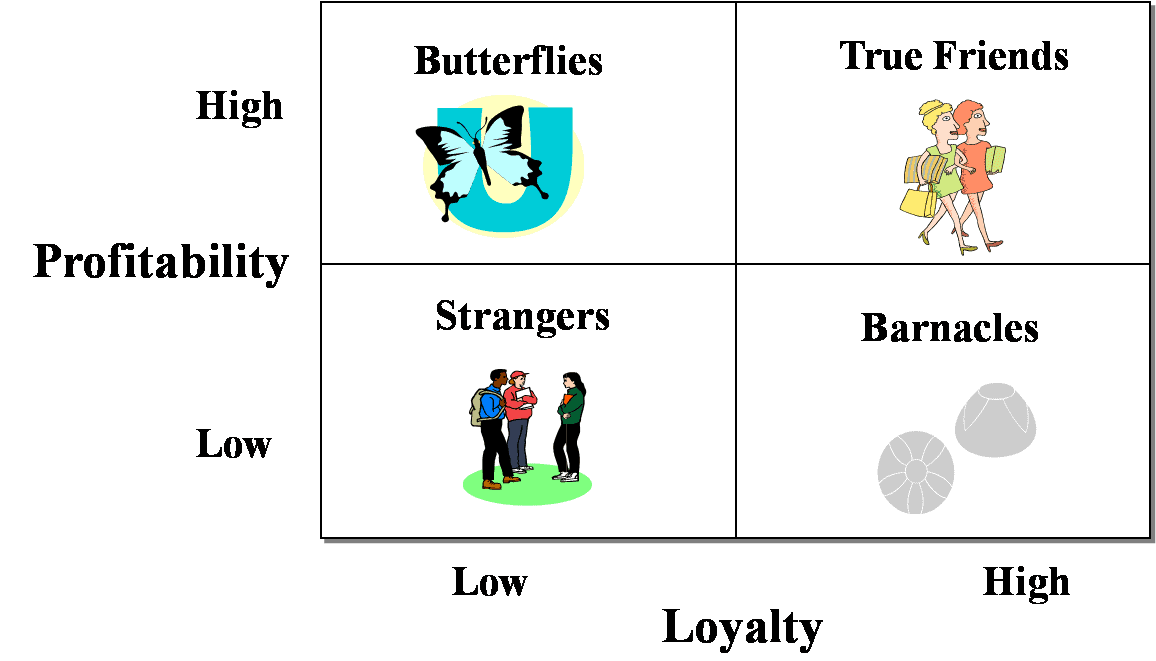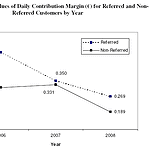We do a bit of work on loyalty programs for some of our clients. I quite like the mixture of automation, pro activity, data-insight and self-serve that a well designed program provides to relationship marketers. But the mantra needs to be;
“Loyalty programs are the price you pay for rich customer data, you make money from the careful use of that data.”
Partly because of this, in retail, I favour a program structure that signs up all customers willing to provide their details but requires a threshold volume of sales be achieved to ‘qualify’ for membership, which in turn triggers engagement / communications investment by the retailer.
This structure comes from a research paper that caused an epiphany for me when I first read it, breathlessly, in the Harvard Business Review. ‘The Mismanagement of Customer Loyalty’ was published in 2002 by Werner Reinartz and V. Kumar. This article introduced a retail customer classification that is extremely useful as you tune your loyalty program;
This taxonomy is particularly important because one of the program decisions you must make is how high to set your thresholds for participation & importantly, for rewards. Should you;
- Set thresholds low and reward as many customers as possible (making the CFO worry about your low loyalty program breakage rates, i.e. those points that expire without being used)? This approach will get you data from most customers as they remember to identify themselves when shopping, but risks making the rewards trivial and not motivating (or the program too expensive), or
- Shamelessly make it a ‘best customer’ program, set thresholds high so you can afford to reward the very best customer spectacularly (and make other customers jealous)? This runs the risk that only the very committed will bother to give you their shopping data.
Striking the right balance is where chasing butterflies comes in.
Butterflies are those customers who have no interest in a relationship with you. They flit in, buy and fly away to the next provider. Lingering is not in their nature, they are constantly looking for the next source of nectar. They can be very profitable, as long as you do not try to chase them and change their nature, wasting precious marketing funds. These are the one-time big purchase customers quite common in luxury goods retailing; accept they will not be besotted with your brand, no matter how large their initial purchase, bank the margin and move on.
Barnacles are very sticky, they engage in your program but spend little, so they are also a risk to profitability. But butterflies are the highest risk because they spend a lot… once or twice, so they tantalize.
But here is the quandary. Really good customers look just like butterflies early in the relationship with you. You want to chase new ‘true friends’ but not ‘butterflies’.
How do you recognise a new ‘true friend’ and distinguish them from a ‘butterfly’?
In program terms, this requires you to look back in time at the way ‘true friends’ behaved when they first joined the program to see if there is a behavioural difference between the two that allows you to recognise the butterflies. Do new ‘true friends’ start with specific products or channels? Then adjust program mechanics to avoid investment in customers likely to be butterflies. For example, look at the average one-off purchase of butterflies and set the thresholds for program qualification slightly above this to avoid spending money on (at least half of) them.
So at the risk of oversimplifying, these are my retail loyalty program ‘rules of thumb’;
- make it really easy for butterflies to buy, but do not invest, in program terms, until they buy ‘x’ times
- this will help deal with the low spending, low frequency ‘strangers’ as well
- set program qualification levels above the average ‘butterfly’ spend
- identify barnacles and make them a few great points offers. Those that do not respond have small wallets, those that do are promiscuous with your competitors and therefore worthy of your attention.





